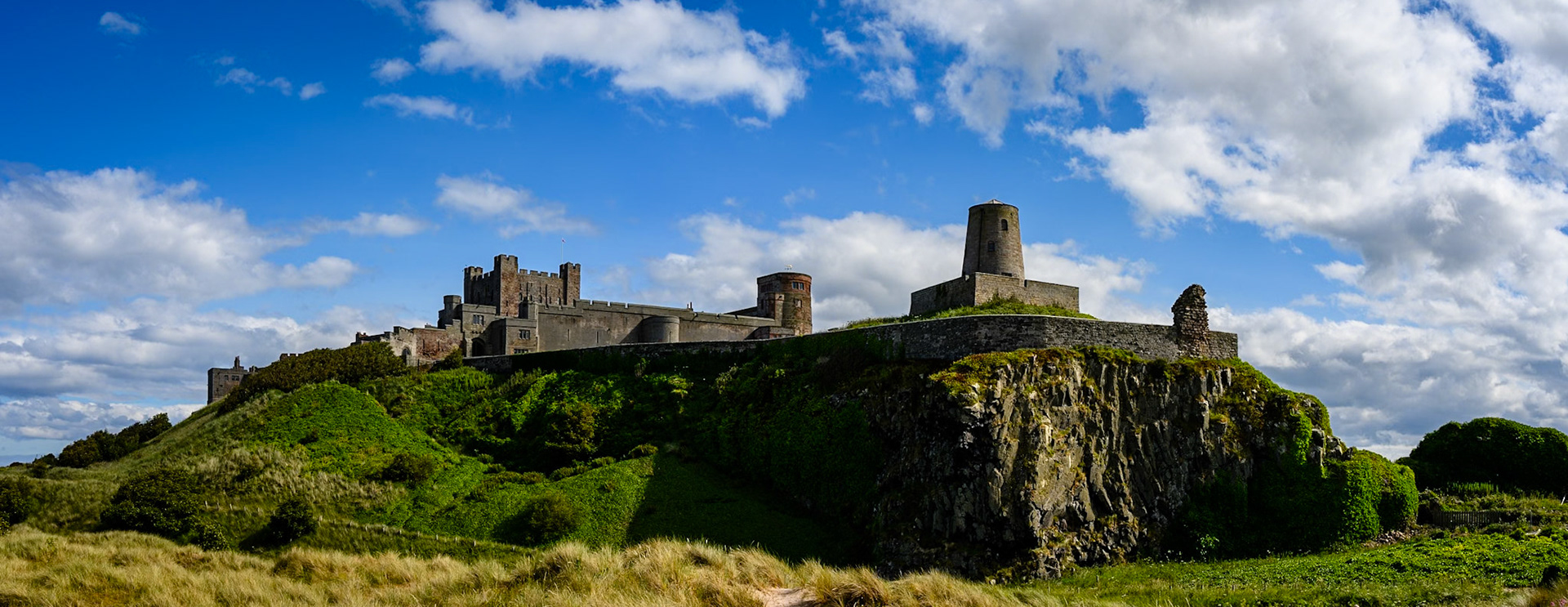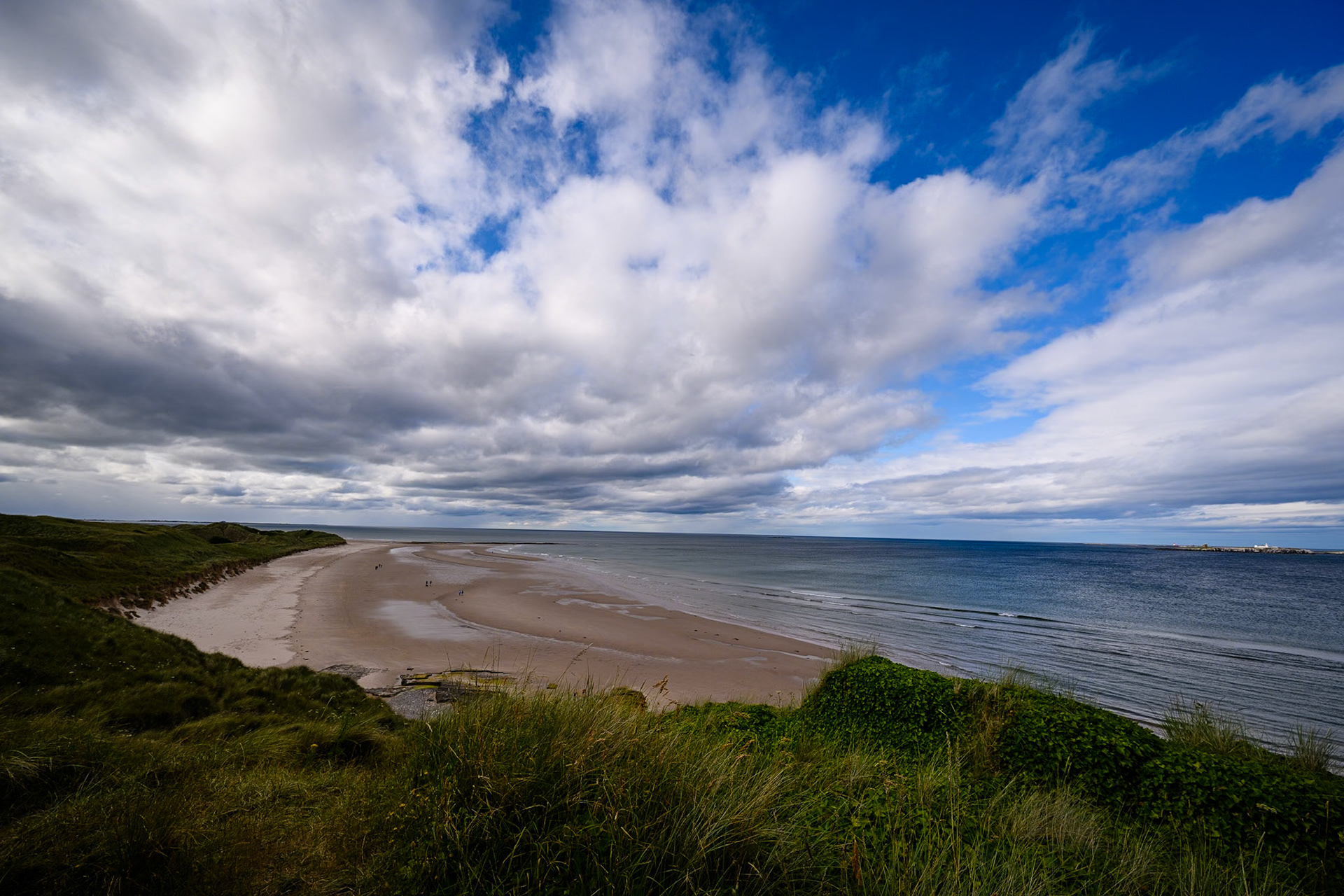Northumberland is a 'ceremonial county' in North East England, bordering Scotland. It is bordered by the Scottish Borders to the north, the North Sea to the east, Tyne and Wear and County Durham to the south, and Cumbria to the west. The town of Blyth is the largest settlement.
Much of the county's history has been defined by its position on a border. In the Roman era most of the county lay north of Hadrian's Wall, and the region was contested between England and Scotland into the Early Modern era, leading to the construction of many castles, peel towers and bastle houses, and the early modern fortifications at Berwick-upon-Tweed. Northumberland is also associated with Celtic Christianity, particularly the tidal island of Lindisfarne. During the Industrial Revolution the area had significant coal mining, shipbuilding, and armaments industries.
Bamburgh Castle

Bamburgh Castle, on the northeast coast of England, by the village of Bamburgh in Northumberland, is a Grade I listed building.
The site was originally the location of a Celtic Brittonic fort known as Din Guarie and may have been the capital of the kingdom of Bernicia from its foundation c. 420 to 547. In that last year, it was captured by King Ida of Bernicia. After passing between the Britons and the Anglo-Saxons three times, the fort came under Anglo-Saxon control in 590. The fort was destroyed by Vikings in 993, and the Normans later built a new castle on the site, which forms the core of the present one. After a revolt in 1095 supported by the castle's owner, it became the property of the English monarch.
In the 17th century, financial difficulties led to the castle deteriorating, but it was restored by various owners during the 18th and 19th centuries. It was finally bought by the Victorian era industrialist William Armstrong, who completed its restoration. The castle still belongs to the Armstrong family and is open to the public.






Church of St. John The Baptist, Edlingham
St John the Baptist is a medieval (11th century) church in Edlingham in the English county of Northumberland.
The church is mostly Norman, from two periods, the late 11th – early 12th century and late 12th century. The chancel arch and the south porch, with its rare Norman tunnel vault, are late 11th century, and the north aisle arcade is from the late 12th century. The columns are circular and the capitals are scalloped with bands of nail-head. The defensible west tower may also have been begun in the late 12th century, but completed later.
The church is adjacent to Edlingham Castle, a 13th-century castle with 16th-century battlements and defences.






Edlingham Castle
Edlingham Castle is a small castle ruin, having scheduled monument and Grade I listed building status, in the care of English Heritage. It is located in a valley to the west of Alnwick, Northumberland, England. It has been described as "...one of the most interesting in the county", by Nikolaus Pevsner, the architectural historian.
The ruins are mostly laid low, though much of the solar tower still stands despite an impressive crack running several stories down to ground level. The foundations and part of the walls of the hall house, gatehouse, barbican and other courtyard buildings are still visible, most dating from the 16th century.
The castle – more properly a fortified manor house typical of many medieval houses in the North of England – guards one of the few approaches to Alnwick through the hills to its west. Its fortifications were increased in response to the border warfare which raged between England and Scotland in the period from about 1300 to 1600.








Linhope Estate
Dunstanburgh Castle



Seahouses

















World War II FW3/Type 22 Pillbox
Bamburgh Beach - Northumberland


Bamburgh Beach


Inner Farne Lighthouse and St Cuthbert's Chapel

Belford Northumberland




Knaresborough Viaduct


Knaresborough, North Yorkshire
Knaresborough Viaduct is a viaduct in the North Yorkshire town of Knaresborough, England. The viaduct carries the Harrogate line over the River Nidd in the town. The viaduct was supposed to have opened in 1848, but the first construction collapsed into the river very near to completion, which necessitated a new viaduct and delayed the opening of the line through Knaresborough by three years.









